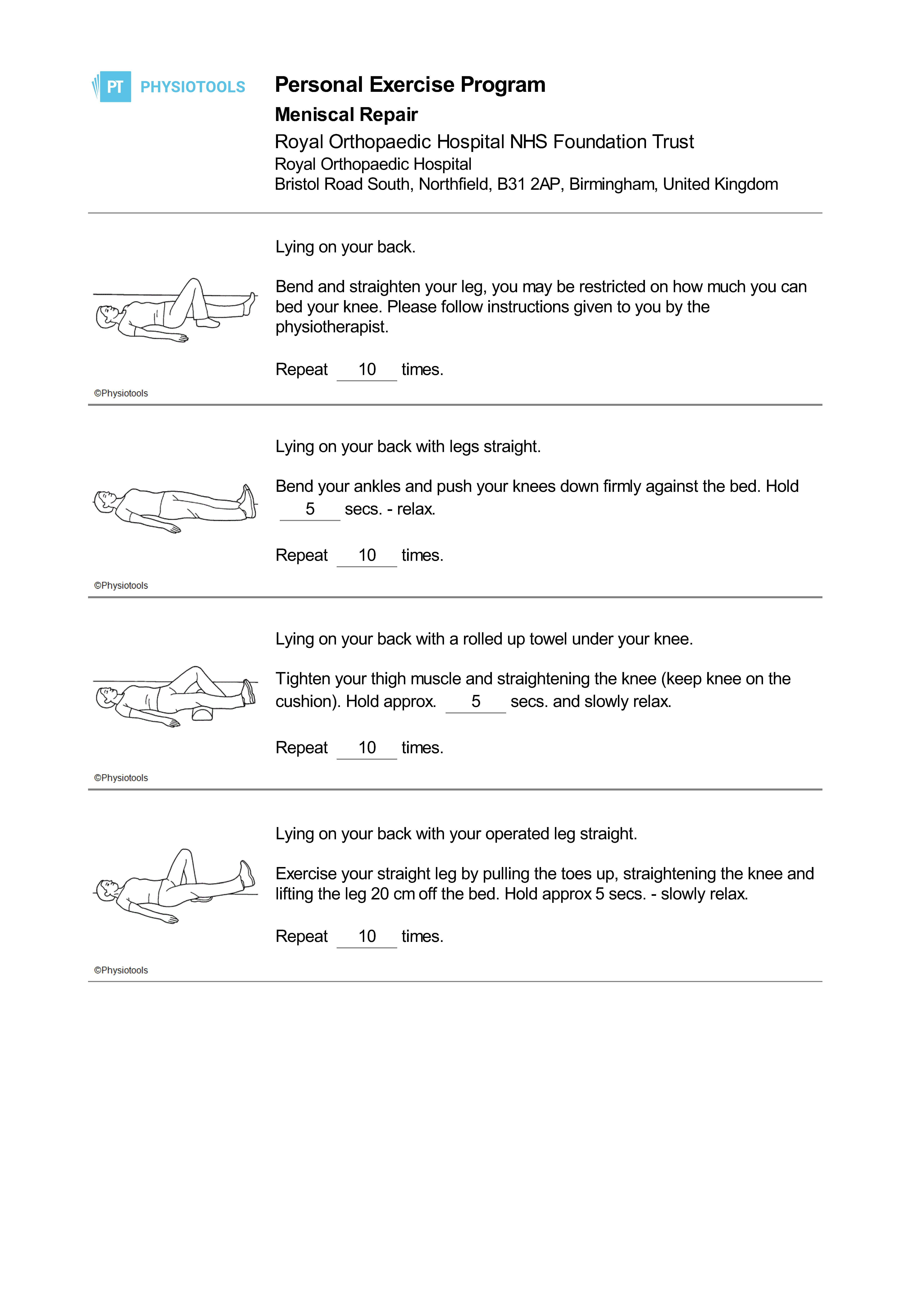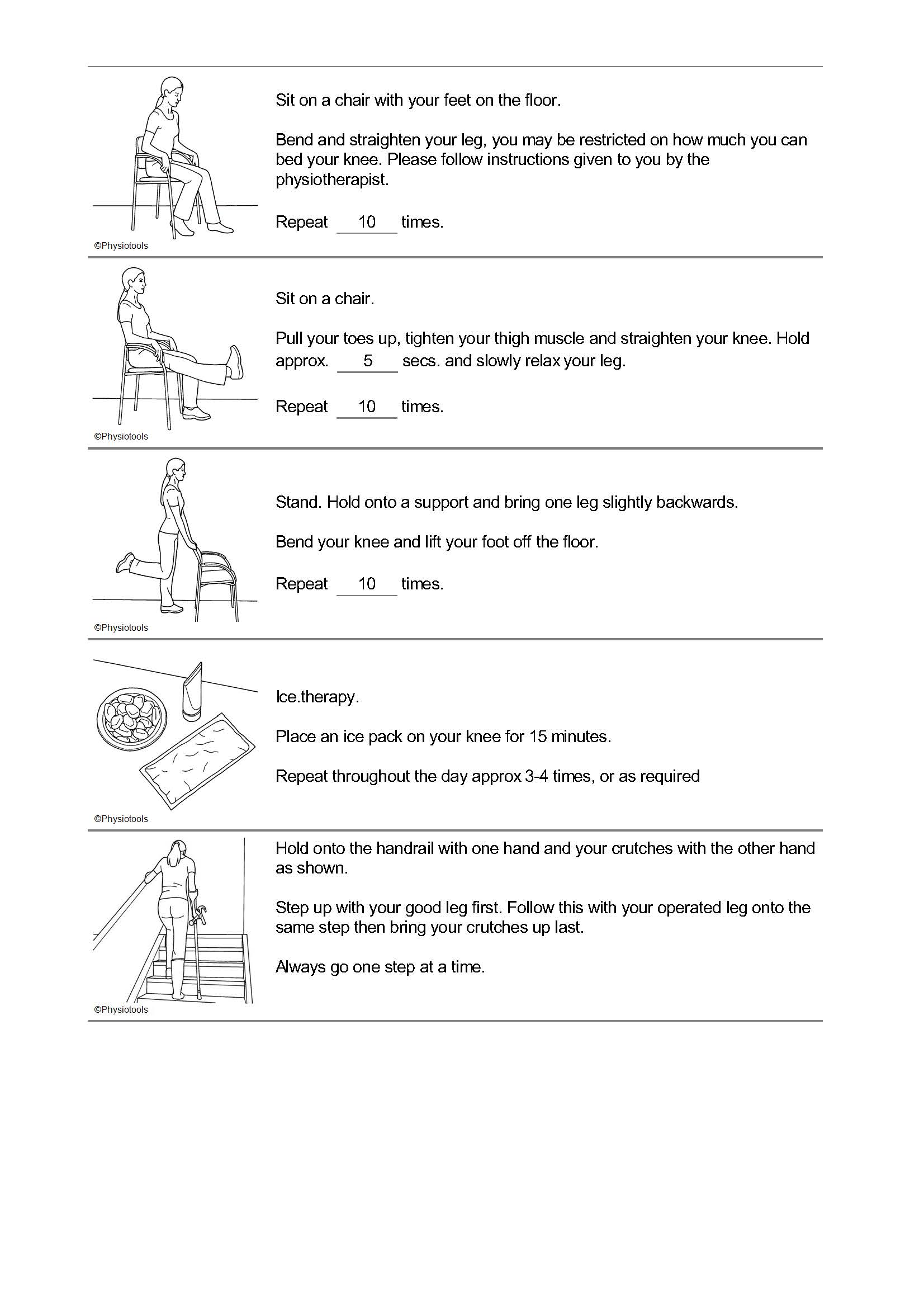
Meniscal Repair of the Knee
What is the knee joint?
The knee is a very important joint in the body and consists of the thigh bone (femur) and shin bone (tibia). It plays an extremely important role in supporting nearly the entire weight of the body and does this with the help of surrounding muscles, ligaments and cartilage.
You have many muscles around your knee which help provide stability and allow movement. The main muscles surrounding the knee are the Quadriceps (front of thigh), Hamstrings (back of thigh) and Calf (back of lower leg).
Ligaments hold your bones together and are therefore integral to stabilising the knee. Anterior Cruciate Ligament (ACL) prevents excessive forward movement of the tibia on the femur. Other important ligaments in the knee are the Posterior Cruciate Ligament (PCL), the Medial Collateral Ligament (MCL) and the Lateral Collateral Ligament (LCL).
There are 2 types of cartilage: the Meniscus and Articular Cartilage. The menisci are disc shaped fibrous cartilage that are situated between the femur and tibia. They provide stability, act as shock absorbers, lubrication and allow equal weight distribution. Articular Cartilage covers the end of the bones and allows them to move smoothly against each other with less friction. It also helps spread the load applied to the joint.
What happens during surgery?
A miniature camera is inserted through a small incision, this provides a clear view of the inside of the knee. Your surgeon inserts miniature surgical instruments through other small incisions to repair the tear.
What should I expect after my surgery?
Mobilisation
You will aim to mobilise on the day of your surgery, this may be with the use of elbow crutches depending on the site of your repair. You should also be able to go up and down stairs. The exercises that you are allowed to complete will depend on what area has been repaired and if any restrictions have been advised by your surgeon. Your physiotherapist will teach you the appropriate exercises to complete.
Pain relief
A nerve block is sometimes used during surgery which means your limb may feel numb immediately after your operation. It is normal to feel some pain as the block wears off and you will be provided with some painkillers to help with this. It is important to take these as prescribed to keep pain to a minimum.
Ice
Ice can be helpful to reduce pain/swelling. You should protect your dressings from getting wet with a plastic bag. Wrap a bag of ice/frozen peas in a damp towel and apply for 10-15 minutes. This can be repeated every 3-4 hours. For knee surgery, elevating your leg on pillows can also help.
Wound care
Your wounds will need to be kept clean and dry. The nursing staff will provide you with more information about wound care on discharge.
Driving and work
You should not drive whilst using elbow crutches. Please discuss this further with your consultant or physiotherapist. When you can return to work will depend on the job that you do. Your physiotherapist or consultant will be able to advise you on this.
Leisure and sport
This will also depend on the extent of the surgery you have had and what activities you want to return to. You often need to avoid twisting on your knee, impact sports and deep squatting for 3 months but you will be referred to Outpatient Physiotherapy after discharge where you can discuss this further.
More information
If you have any questions or need any advice about your exercises, then please contact the Physiotherapy Department between 8am 4pm Monday to Friday on 0121 812 3254.


